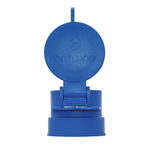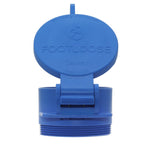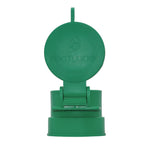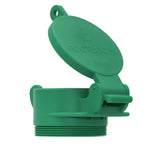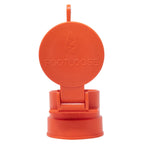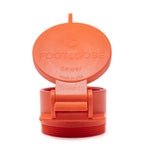You have no items in your shopping cart.
The time has finally come to install a septic system on your property. You had originally planned on constructing a conventional septic tank and leach field, but wait--what about that forest preserve you live by? Will a regular septic tank pollute that watershed? And during your research, you recall that when building your property, you ran into issues with bedrock beneath the surface of the soil--what if the soil around your property is too shallow to dig deep enough to install a regular septic tank?
Luckily, there are several alternative septic systems that are tailored for conditions like the scenarios mentioned above.
What are Alternative Septic Systems?
An alternative septic system is any type of building wastewater (also called “effluent”) drainage system that deviates from the standard septic tank. There are various ways other than a conventional septic system to divert and clean water waste from your home and safely reintroduce it back into the environment!
In this blog post, you’ll learn:
- Why some properties require alternative septic systems
- Different types of alternative septic systems
- How each type of system works
Why Do People Want Alternatives to Septic Tanks?
Just because conventional septic systems are common doesn’t mean they work for every property. There are many reasons why the standard model for wastewater sanitation doesn’t always cut it. For example, some plots of land have bedrock too close to the surface of the earth, which makes it impossible to dig deep enough to install a septic tank. Plenty of residents in the U.S. also live near bodies of water that are especially sensitive to water pollution, which means that the standard method of sanitation in septic tanks isn’t sufficient to maintain the area’s ecosystem.
Another big issue that many homeowners and building managers face is trying to build alternative septic systems for land that won’t perk. “Perking” refers to the ability of soil to absorb and retain water. Because part of a conventional septic system is releasing treated water out into the soil (where it is further purified by the microbes and plants in the soil and eventually turns into groundwater), you will run into terrible flooding issues if you build a conventional septic system in land that won’t absorb all that water! Sewer line repair
Luckily, before you break ground on your new septic system, or sewer line repair you will have to pass a “perk” test (or “perc” test, which is short for percolation) to determine if the soil is fit to host a conventional septic tank. If your perc test doesn’t go well, or if you have other concerns about a conventional septic system on your property, never fear. This is where alternative septic systems come into play.
Each alternative septic system you will encounter in this blog post has a different level of required maintenance. Additionally, alternative septic systems cost different amounts based on the equipment and maintenance they require. Read on to learn about alternative septic solutions that could be a better fit for your home than a conventional system.
Types of alternative septic systems
Mound Systems
Mound systems work well as alternatives to septic tanks when the soil around your home or building is too dense or too shallow or when the water table is too high. Although they are more expensive and require more maintenance than conventional systems, mound systems are a common alternative. They are above-ground systems that are covered in topsoil and include an extra component called a pump chamber, which separates effluent out from the scum and sludge in the first septic tank.
Pressurized Dosing
The pressurized dosing system uses pressure to distribute effluent into the leach field in more even, measured doses (exactly as the system’s name describes!). The measured method of distributing effluent can make this option great for rehabilitating a leach field after a septic system failure. Because this method only focuses on the dispersal of effluent into the soil, pressurized dosing can be combined with any of the below-mentioned systems that focus on water treatment.
Plastic Chamber Leach Field

Plastic chamber leach fields are great alternative septic systems for small lots and properties with high or variable groundwater tables. Plastic chambers in the shape of half pipes take the place of the gravel in the leach field and create a void for wastewater flow. The half-moon-shaped plastic chambers rest in the soil, open side facing down, and allow the effluent to come in contact with the soil beneath it, treating the water and letting it flow into the earth.
Sand Filter
As the name suggests, sand filter septic systems use sand to purify and remove toxins from wastewater. Similar to the aerobic treatment system above, the sand filter system also incorporates oxygen into its system to filter out pathogens. This purification takes place in a sealed chamber that can be built above or below the ground. This is one example of an alternative septic system without a leach field, which makes it compatible with environmentally sensitive areas. In some cases, the treated water can pass directly from the sand filtration system to the soil without needing to flow through more piping to a leach field.
Aerobic Treatment System
An aerobic treatment system incorporates oxygen into the treatment tank with an air pump, which pulls air from the atmosphere into the septic tank. This additional oxygen helps clean the effluent by stimulating natural bacterial activity. According to the EPA, aerobic treatment systems apply the same technology as large-scale sewage plants but on a smaller scale. This option is another one of the great alternative septic systems for small lots, lots with suboptimal soil conditions, or lots near bodies of water that are sensitive to pollution.

Drip Distribution/Irrigation
The drip distribution method releases treated septic water over a greater surface area of land. Instead of one PVC pipe that disperses treated water into the leach field, the drip distribution method “irrigates” the leach field with long, winding, flexible tubing that releases small increments of water all along the length of the tubing.
Newer technology also allows timed and controlled release of water with this method. Because these timers require electricity, the drip distribution septic system needs more maintenance. Power outages may also make these alternative septic solutions more high-maintenance than other systems.
Constructed Wetland System
The constructed wetland system employs wetland plants to do some of the filtration work for your septic system. While your house or building’s water waste still goes through one initial septic tank, the treated water is later sent to a plot of wetland that contains different types of gravel and grasses. After that round of purification, the water moves into a drain field where it is released into the soil, just like with a conventional system.

Each of these alternative septic systems require different amounts of land, soil depth, material, and money to construct. To decide which system is right for you, take into account the land on your property and your surrounding environment. If you’re unsure of which septic system is appropriate for your property and your budget, be sure to call a septic service provider in your area.




